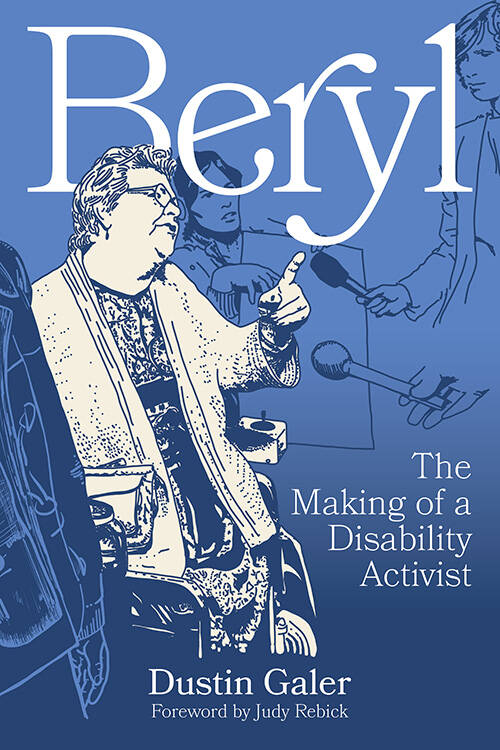Disability activist’s key work recalled
Advertisement
Read this article for free:
or
Already have an account? Log in here »
To continue reading, please subscribe:
Monthly Digital Subscription
$0 for the first 4 weeks*
- Enjoy unlimited reading on winnipegfreepress.com
- Read the E-Edition, our digital replica newspaper
- Access News Break, our award-winning app
- Play interactive puzzles
*No charge for 4 weeks then price increases to the regular rate of $19.00 plus GST every four weeks. Offer available to new and qualified returning subscribers only. Cancel any time.
Monthly Digital Subscription
$4.75/week*
- Enjoy unlimited reading on winnipegfreepress.com
- Read the E-Edition, our digital replica newspaper
- Access News Break, our award-winning app
- Play interactive puzzles
*Billed as $19 plus GST every four weeks. Cancel any time.
To continue reading, please subscribe:
Add Free Press access to your Brandon Sun subscription for only an additional
$1 for the first 4 weeks*
*Your next subscription payment will increase by $1.00 and you will be charged $16.99 plus GST for four weeks. After four weeks, your payment will increase to $23.99 plus GST every four weeks.
Read unlimited articles for free today:
or
Already have an account? Log in here »
Hey there, time traveller!
This article was published 30/12/2023 (715 days ago), so information in it may no longer be current.
When disaster strikes, people can choose to wallow in self-pity or to try to make the best of the situation. In Beryl: The Making of a Disability Activist, Dustin Galer tells the story of Beryl Potter, who became an advocate for people with disabilities in response to the struggles of her own life and who achieved much more than she might have imagined.
Galer has a PhD in history from the University of Toronto and is the author of Working Towards Equity, a history of the Canadian disability rights movement. He lives in Hamilton, Ont.
Born in Liverpool in the 1920s, Potter’s problems began when she was struck with rheumatic fever at a young age. Although she recovered, economic troubles in the family made her life unstable. Her father’s death and her mother’s remarriage further destabilized her life. The Second World War, marriage and motherhood filled much of her time in the years that followed.

Beryl: The Making of a Disability Activist
A move to Canada for better economic prospects led to Potter’s decision to join the workforce, a choice that was becoming common for women in the 1950s. A seemingly small accident at the bakery and lunch counter where she worked caused a blood clot to form behind her knee, which eventually led to the leg being amputated. Her second leg and one of her arms followed, and she lost sight in one eye.
These troubles led to a new purpose in life as a disability advocate, both in Canada and back in England. Sloped sections on sidewalks that allow people with wheelchairs or walkers to move independently, automatic doors and transit reforms were all part of Potter’s campaign. She spoke to politicians and the media, and even had the chance to meet and talk with Terry Fox before he began his Marathon of Hope. Later in her life, she was awarded the Order of Ontario. She died in 1998.
Beryl: The Making if a Disability Activist is a somewhat academic read, but still fairly accessible. The text combines historical information and commentary with the story of an individual who chose to use her situation to make a difference for others rather than lamenting the loss of her limbs — although Galer acknowledges the emotional struggles Potter experienced, ranging from depression and suicidal thoughts to high points when she was able to achieve her goals. The book includes an index and notes at the end, making it easier for readers to research the story further if they wish.
Galer ends the book with an epilogue reflecting on identity and loss. With references to Friedrich Nietzsche’s philosophy of pain and suffering in relation to the meaning of life, he reflects on isolation, service and overcoming adversity.
For many, Galer says, Beryl Potter was a role model for promoting the rights of people who are often ignored or misunderstood. The issues in this story are especially important as Canada’s population continues to age and the need to accommodate those with disabilities continues to rise.
Historians, casual readers looking for an engaging biography and those with a particular interest in matters related to disabilities will enjoy Beryl: The Making of a Disability Activist.
Susan Huebert is a Winnipeg writer and dog walker.



